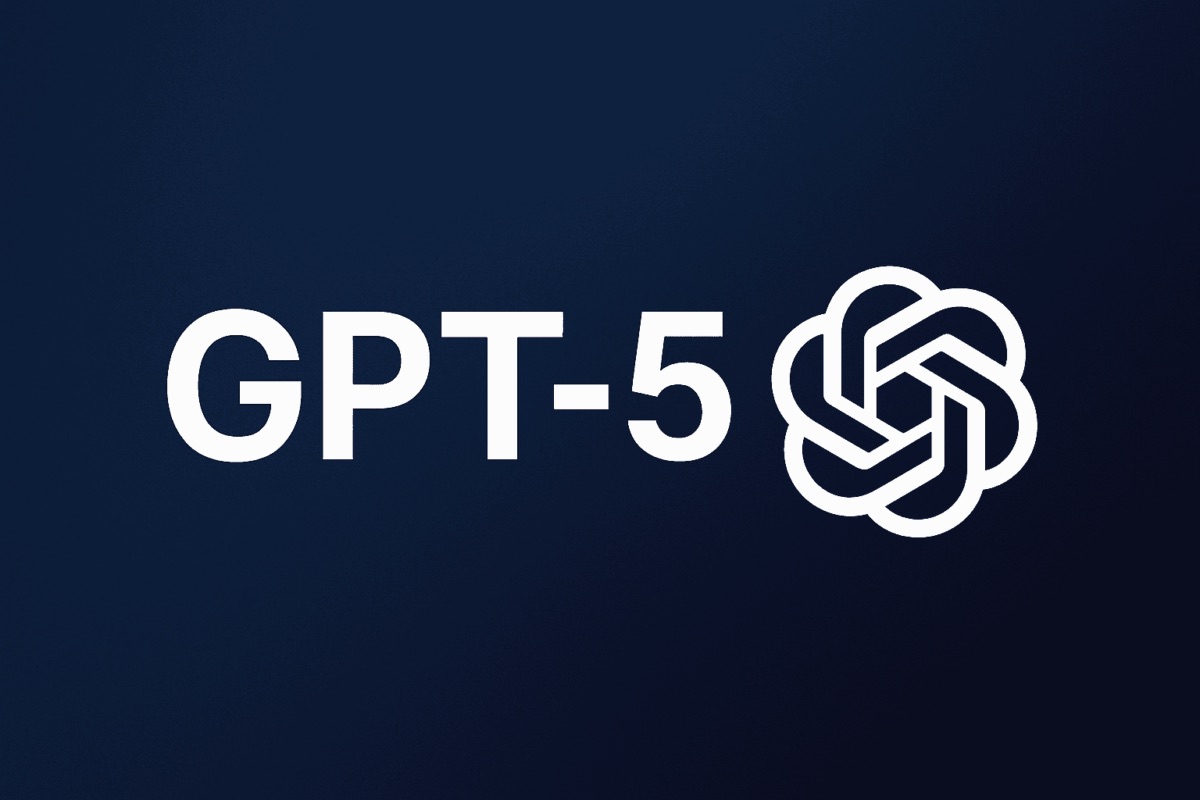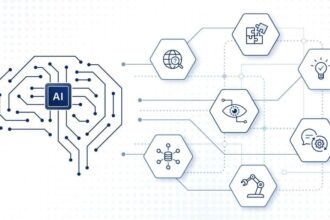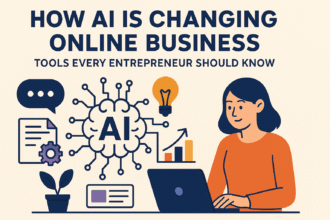Artificial intelligence has always lived in the blurred space between science fiction and science fact. For decades, researchers promised machines that could think, reason, and even create, while skeptics pointed to overhyped claims and technological limits. But in the early 2020s, something shifted. Models like ChatGPT, MidJourney, Stable Diffusion, and Claude weren’t just curiosities—they became tools millions of people used daily. Suddenly, AI wasn’t an abstract future. It was here, shaping emails, generating code, writing articles, designing art, and even influencing business strategy.
As the decade unfolds, one question overshadows all others: where is artificial intelligence heading next? Are today’s large language models a stepping stone to artificial general intelligence (AGI)—a system capable of human-level reasoning across domains—or will we stall at advanced but narrow AI? The path forward is uncertain, but the trajectory of technology, investment, and social adoption points toward a future where AI is not only unavoidable but foundational.
In this deep-dive, we’ll explore the journey from tools like ChatGPT to the possibility of AGI, examining the scientific, economic, and ethical forces at play.
The Leap from Narrow AI to Generative AI
Before 2022, most consumers experienced AI passively. Recommendation systems shaped what we watched on Netflix or shopped for on Amazon. Search engines used ranking algorithms to prioritize content. Voice assistants like Siri or Alexa responded to simple commands, often frustratingly limited. These were forms of narrow AI—systems designed for specific tasks with little flexibility.
The arrival of generative AI marked a profound shift. Unlike earlier models, generative AI could create new content—whether text, images, music, or video—based on training data. ChatGPT became the most visible symbol of this transition. Launched by OpenAI, it demonstrated that conversational AI could engage with nuance, humor, and even empathy. Its rapid adoption—100 million users within two months—made it the fastest-growing consumer application in history.
This leap wasn’t just about entertainment. Businesses quickly integrated generative AI into workflows. Customer support, marketing copy, coding assistants, research summarization—all became faster and cheaper. What had been a technological novelty quickly matured into an economic engine, forcing industries to adapt.
Why Large Language Models Matter
To understand why ChatGPT and its peers matter, we need to look at what makes them unique. Large language models (LLMs) are built by training on massive datasets of human text. They use billions (and now trillions) of parameters to predict the next word in a sequence. On the surface, this sounds simplistic. But at scale, something remarkable happens: LLMs begin to capture not just grammar, but patterns of reasoning, structure, and creativity.
Critics argue that LLMs don’t “understand” in the human sense. They don’t form intentions or grasp meaning as consciousness does. Yet the practical outcomes are hard to ignore. If a tool can draft a legal brief, debug code, or offer medical insights that rival human experts, does it matter whether it “understands” or merely simulates understanding?
This philosophical debate echoes older shifts in technology. We don’t require airplanes to flap wings like birds to call them flight. We don’t require calculators to “think” like humans to value them in mathematics. LLMs have opened a similar threshold: utility beyond comprehension.
The Road to AGI: Definitions and Debates
If ChatGPT represents today’s frontier, AGI represents the holy grail. But what exactly is artificial general intelligence? Definitions vary, but most share common elements:
- Generality: The ability to perform a wide range of tasks across domains, not just specialized ones.
- Learning: The ability to acquire new skills or adapt to unfamiliar problems without retraining.
- Reasoning: The capacity to plan, infer, and apply logic across contexts.
- Autonomy: Operating independently with minimal human direction.
For some, AGI is synonymous with human-level intelligence. For others, it means a system that can outperform humans across almost all economically valuable tasks.
The debate is not just academic. For AI labs like OpenAI, DeepMind, Anthropic, and others, AGI is explicitly the mission. Billions of dollars are being poured into making this leap, with backers ranging from venture capital firms to tech giants like Microsoft and Google. The sheer weight of resources suggests AGI is no longer a distant dream but an anticipated milestone—though timelines remain hotly contested.
Breakthroughs Driving the Future
The road from ChatGPT to AGI isn’t guaranteed, but several key technological breakthroughs are pushing boundaries:
- Scaling Laws: Researchers discovered that as models grow larger—with more parameters and data—they don’t plateau in performance. Instead, they continue to improve, showing emergent abilities not present in smaller versions.
- Multimodality: Future AI isn’t just text-based. Multimodal systems can integrate speech, images, video, and even sensory data. Imagine an AI that reads a legal contract, watches a video deposition, and generates a compelling courtroom argument.
- Agentic AI: Beyond chat, the next leap is autonomous agents—AI systems that plan and execute goals without step-by-step instructions. These agents can use tools, browse the internet, schedule tasks, and even negotiate with other agents.
- Efficiency Gains: The cost of inference (running AI models) has dropped dramatically. Between 2022 and 2024, inference costs for GPT-3.5-level models fell by over 280-fold. This makes powerful AI accessible beyond Big Tech, enabling startups and individuals to innovate.
- Customizability: Fine-tuning models for specific domains (medicine, law, engineering) means AI won’t just be general—it will be specialized at scale.
Each of these advances pushes AI closer to adaptive, general-purpose reasoning.
Economic Impact: Billions or Trillions?
The economic stakes are enormous. A 2024 McKinsey report estimated that generative AI could add up to $4.4 trillion annually to the global economy. That figure rivals the GDP of entire nations.
Industries most affected include:
- Customer service: AI chatbots reduce labor costs while scaling support.
- Software engineering: Coding assistants increase productivity by 30–50%.
- Marketing and sales: Automated content generation personalizes campaigns at scale.
- Healthcare: AI accelerates drug discovery, diagnostics, and personalized medicine.
- Education: Adaptive tutors offer one-on-one instruction for millions simultaneously.
In many sectors, AI is not just a tool—it’s becoming a force multiplier, amplifying human output in ways comparable to past industrial revolutions.
Social and Ethical Challenges
Yet the rise of AI raises profound questions. If AI reshapes economies, what happens to the workforce? Will millions lose jobs, or will new ones be created? The truth is likely both. History shows technology displaces some roles while creating others, but the speed and scope of AI disruption may outpace traditional reskilling.
Ethics also loom large. Who owns AI-generated work? How do we ensure AI systems aren’t biased or harmful? What happens when AI can generate deepfakes so convincing that truth itself becomes negotiable?
Governments are beginning to respond. The EU AI Act and proposed U.S. regulations are early attempts at oversight, requiring transparency, safety testing, and human oversight. But global governance is fractured. In a world where nations compete for AI dominance, alignment on ethical norms may prove elusive.
The Human Question: Understanding, Consciousness, and Trust
Perhaps the deepest debate is philosophical. Can machines ever be truly conscious? Or are they simply advanced pattern recognition systems that mimic intelligence? For many, AGI implies not just capability, but awareness. Yet neuroscientists themselves still struggle to define human consciousness, let alone replicate it in silicon.
Trust becomes central here. We don’t need AI to be conscious to be useful. But if we entrust critical decisions—medical diagnoses, judicial rulings, financial strategies—to AI, do we need to believe it “understands” us? Or is performance enough?
This tension between simulation and authenticity will define public acceptance of AI in the years ahead.
Everyday Life in the AI Era
For ordinary people, the shift is already visible. Students use AI tutors to learn algebra. Freelancers rely on AI to generate contracts. Families plan vacations with AI itinerary builders. Small businesses market products with AI-driven copywriting.
Over time, these tools will become invisible infrastructure—as taken for granted as electricity or the internet. You won’t think about “using AI”; it will simply underpin daily tasks.
But this normalization brings new dependencies. What happens if critical AI systems fail, or if they’re manipulated by malicious actors? Just as society depends on stable power grids and banking systems, future societies will depend on stable AI networks.
The Race for AGI: Collaboration or Competition?
The race to AGI is global, with key players across the U.S., Europe, and Asia. OpenAI speaks openly about its mission to achieve AGI safely. DeepMind frames itself as pursuing “science-first” AI. Anthropic emphasizes alignment and safety. Meanwhile, China invests heavily in state-backed AI initiatives, aiming to be the world leader by 2030.
This competition raises geopolitical stakes. Just as nuclear technology reshaped global power in the 20th century, AI dominance could define the 21st. Nations see AGI not only as an economic tool but a strategic one. This adds urgency to discussions about safety, ethics, and international agreements.
Are We Close to AGI?
Predictions vary wildly. Some experts suggest AGI could emerge in the next five to ten years; others argue it remains decades away. Skeptics point out that despite remarkable progress, current models still fail basic reasoning tests, lack true causal understanding, and consume massive amounts of data and energy.
But history cautions humility. Few predicted the smartphone revolution or the pace of internet adoption. AI’s trajectory may similarly surprise. Whether AGI arrives in five years or fifty, the path forward is accelerating.
Conclusion: A Future Written With AI
From ChatGPT to AGI, artificial intelligence is no longer an academic exercise. It is a transformative force, already altering how we create, work, and live. The journey toward AGI is filled with technical breakthroughs, economic opportunities, ethical dilemmas, and philosophical questions.
What’s clear is this: AI will not remain at today’s level. It will grow more capable, more embedded, and more controversial. Whether it becomes an existential threat or humanity’s greatest collaborator depends less on the machines and more on our choices—how we guide, regulate, and integrate them into society.
In the end, the future of AI is the future of us.
Key Takeaways
- ChatGPT and generative AI marked a leap from narrow AI to creative, flexible systems.
- AGI represents the next frontier—general-purpose intelligence capable of reasoning across domains.
- Advances in scaling, multimodality, agentic AI, and efficiency are pushing AI closer to general intelligence.
- The economic impact could reach trillions annually, reshaping industries from healthcare to education.
- Ethical challenges include bias, misinformation, job displacement, and questions of ownership.
- The timeline for AGI remains uncertain, but the race is global and accelerating.








